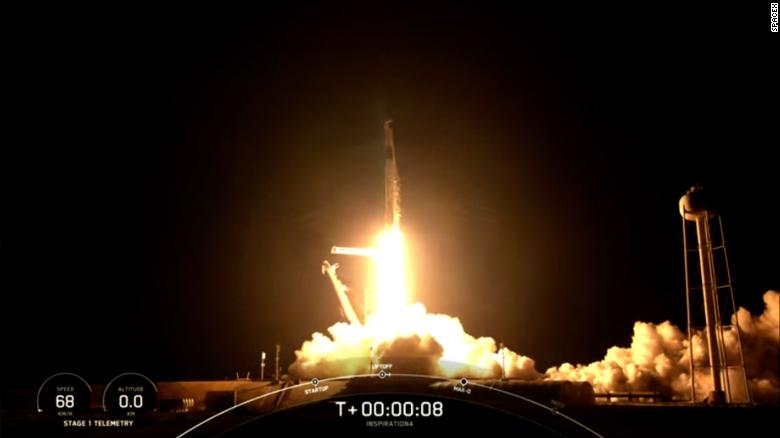
A SpaceX rocket was launched into orbit Wednesday night, carrying four people (four people to orbit), none of them professional astronauts — and marking the start of the first-ever tourist-only voyage to Earth’s orbit.
Inflamed against the night sky by lighting, the launch pad at NASA’s Kennedy Space Center in Florida came when nine SpaceX rocket motors fired just after 8:00. ET, drenched with a light burning in the surrounding marshes as it rose in the higher environment and showed itself in a striking, ghostly light. The capsule carrying the four passengers separated from the rocket after reaching orbital speeds of more than 17,000 miles per hour and began maneuvering into its intended orbit.
The amateur crew, which included a self-funded billionaire, a cancer survivor, a community college teacher, and a Lockheed Martin employee, strapped into their 13-foot-wide SpaceX Crew Dragon capsule Wednesday afternoon, the capsule rocked into space before their SpaceX Raket. Three days on the spacecraft, the astronauts are traveling via orbit and sprung down on Saturday off the coast of Florida.
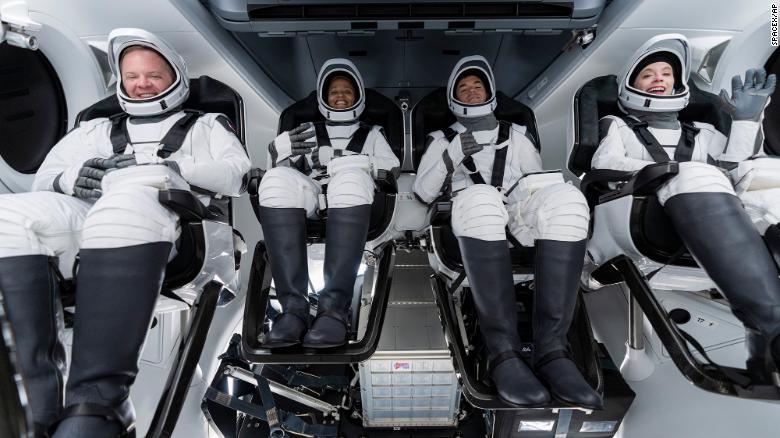
The passengers will float around the capsule for the next three days as it orbits the planet once every 90 minutes, traveling at more than 17,500 miles per hour while taking in panoramic vistas of Earth. Their spacecraft will re-enter the atmosphere for an explosive re-entry and crash down off the coast of Florida to cap off the mission.
Splashdown is on Saturday, however, that may alter, if sooner or later weather or other problems forced it back. The capsule is full of food and food to last around one week.

In the last decade, this is only the third crewed launch from American soil.
The crew includes 38-year-old billionaire Jared Isaacman, who financed his trip personally, Hayley Arceneux, 29 years old, a childhood survivor and current assistant to the St. Jude physician, Sian Proctor, 51, a geologist and Ph. D. teacher at a Community college, and Chris Sembroski, 42-year-old Lockheed Martin employee who took over online.
The entire mission will be carried out by all four passengers on board SpaceX Capsule, a 13-foot wide gum-shaped spaceship, which, after achieving orbital speed, has been developed for the carriage of NASA astronauts, detaches from the SpaceX 9 rocket.
And yes, all passengers must share a unique zero-gravity toilet situated close to the top of the capsule over all three days. There is no showering, and the crew must all sleep on the identical leaning seats that they will be riding in at launch.
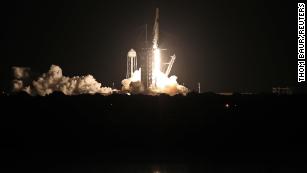
SpaceX hopes that this will be the first visit to tourism in many similar ways to pave the path for a future when space jumps are as regular as aircraft hopping. And SpaceX’s first step on your way is the Crew Dragon capsule. Planned and produced under a NASA agreement, SpaceX still owns and runs the ship and permit to send humans to and from the International Space Station and to sell seats or complete flights whenever the firms choose. And SpaceX and its customers in space tourism may design the complete mission —The passengers will be a mix of whatever foods they choose from the path and the exercise regiment throughout the journey.
Samborski, the 42-year-old, who won his ticket through a rifle, informed reporters during a media briefing on Tuesday night that he was joining the Inspiration 4 mission “We write the rules, we breach a few of them that NASA used to ask for…It’s our way to do stuff like that.”
Civilians have not been to the space for the first time. Although, since Christa McAuliffe’s death a New Hampshire school teacher killed in the Challenger disaster in 1986, NASA has been reluctant to sign up to routine missions for astronauts, a rich thrill-seeker has made their own way to the International Space Station in the 2000ies through a Space Adventures company. US investment management millionaire Dennis Tito, with his eight-day stay at the International Space Station, was the first person to pay his journey in 2001, and six other trips were following him. All of them booked journeys on Russian Soyuz spacecraft alongside experienced astronauts.
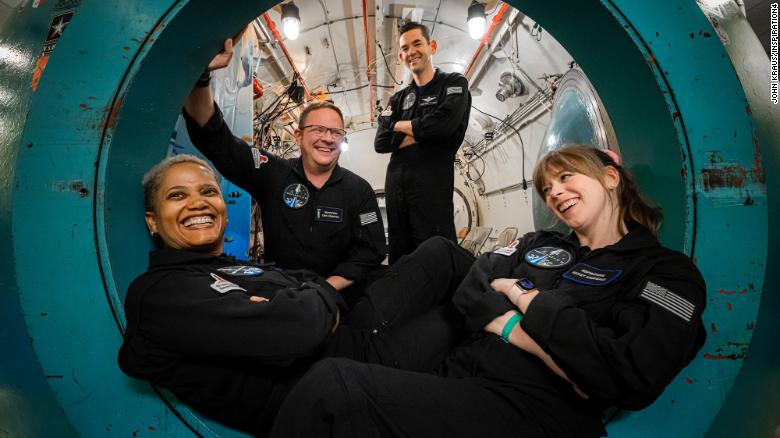
This expedition, on the other hand, has heralded as the start of a new era of space exploration, in which ordinary people, rather than government-selected astronauts and the rare deep-pocketed adventurer, will carry the torch of space exploration.
But, to be clear, we’re still a long way from that reality, and this journey is far from “typical”. It’s a one-of-a-kind expedition back by a millionaire founder of a payment processing company. And while pricing details haven’t been released, it’s expected to cost more than $200 million. (SpaceX’s Crew Dragon spacecraft costs about $55 million per seat, according to one government report.)
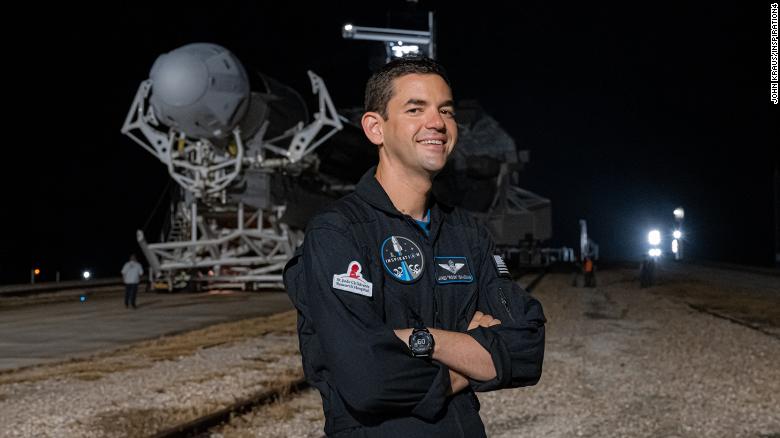
The third billionaire to sponsor space travel in the past three months and the first to take an onboard ticket on a SpaceX spacecraft, Isaacman, is presenting this task as one to inspire the desired space-explorers. He’s also using it as the focus of a $200 million fundraiser for St. Jude Children’s Research Hospital, with $100 million coming from him directly and the rest coming from online donations and an auction that starts on Thursday. A ukulele will play in space by Sembroski, as well as 66 pounds of beer hops.
So far, the fundraising has raised $31 million out of a total goal of $100 million.